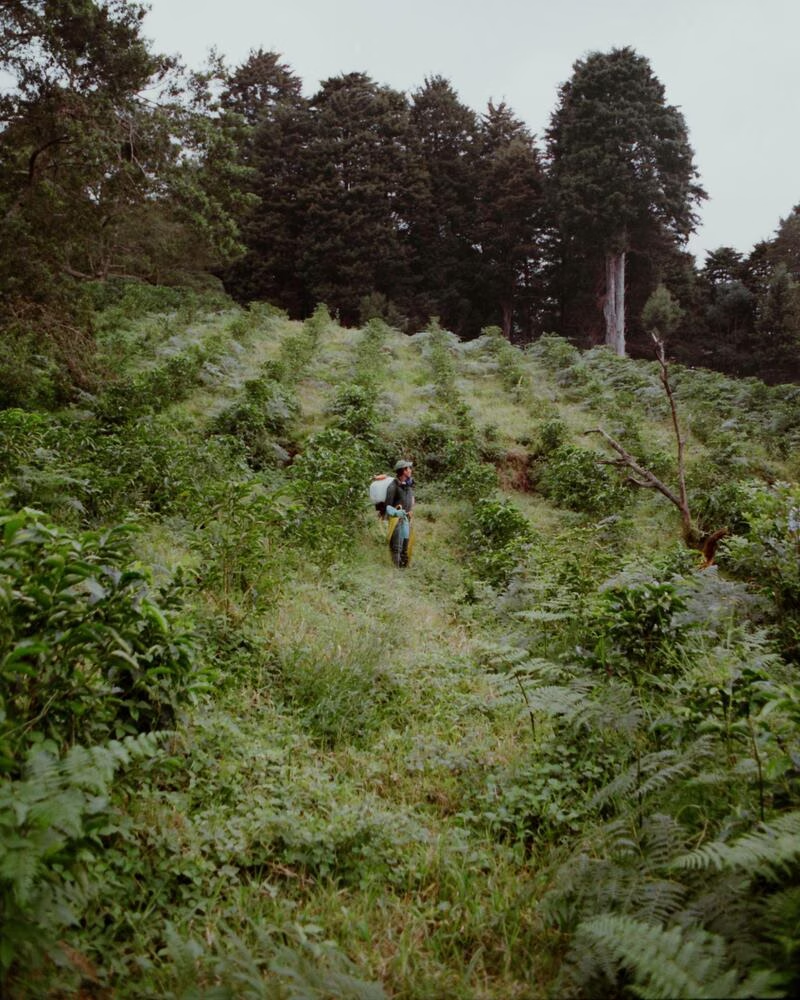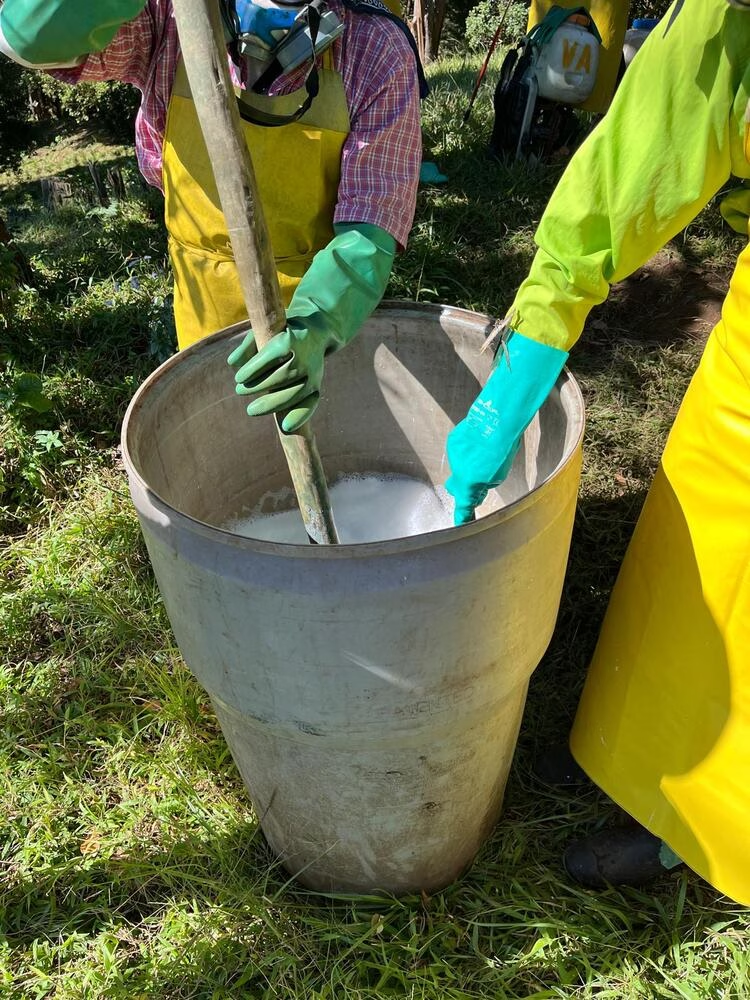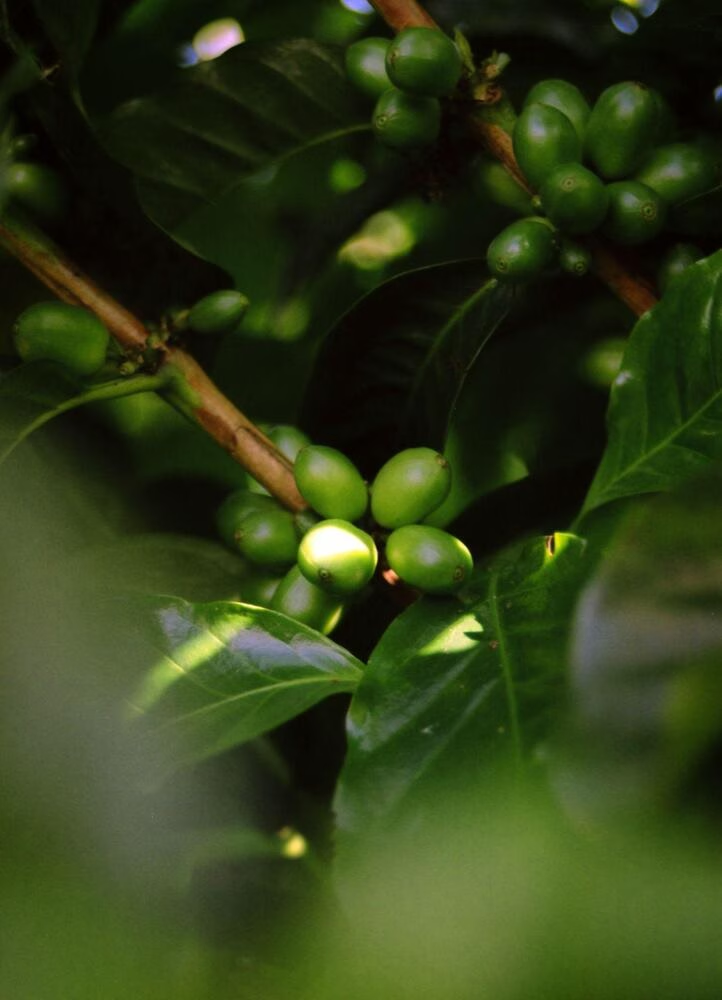The Role of Greenhouse Labs in Advancing Coffee Cultivation and Quality
Discover how greenhouse labs and controlled experiments are advancing coffee production and helping farmers adapt to global warming.
BY VASILEIA FANARIOTI
SENIOR ONLINE CORRESPONDENT
Photos courtesy of POMA Coffee
As climate change intensifies and global demand for high-quality coffee continues to grow, scientific research is playing an increasingly crucial role in shaping the future of coffee production. One of the most promising approaches in modern coffee agronomy is the use of greenhouse labs and controlled experiments to study plant behavior, test new varieties, and develop climate adaptation strategies.
Rasmus Madsen, lead agronomy advisor and researcher at Copenhagen, Denmark’s POMA Coffee, is among those exploring these methods to enhance coffee cultivation. We sat down with him to discuss the latest advancements and how they’re shaping the future of coffee production.

Understanding Coffee’s Response to Environmental Stress
Controlled environments provide researchers with a unique opportunity to observe how coffee plants respond to specific stressors. Whether it’s drought tolerance, disease resistance, or nutrient uptake, the ability to manipulate conditions helps scientists draw precise conclusions. At POMA Coffee’s research facility, Rasmus and his team conduct trials to identify optimal growing conditions for various coffee varieties.
“Controlled environments allow us to isolate variables and understand precisely how different factors affect coffee growth and quality,“ Rasmus emphasizes. By controlling variables such as light, temperature, humidity, and soil composition, researchers can assess how specific conditions impact coffee plant health and yield.

“One of the major advantages is the ability to simulate future climate conditions and test how coffee plants will respond,“ Rasmus continues. This approach helps scientists and farmers make data-driven decisions about cultivation techniques and variety selection.
Industry-Wide Research Initiatives
The Coffee Science Foundation (CSF) and the University of California, Davis, recently launched a research initiative to determine detection thresholds for physical defects in green coffee. By analyzing samples from Brazil and Guatemala, researchers aim to understand how specific defects affect sensory perception, contributing to more accurate coffee grading and improved quality standards.
Additionally, global efforts in coffee breeding are playing a crucial role in climate adaptation. New hybrid varieties are being developed with high productivity across different climate gradients, including warmer conditions.


Controlled Experiments as a Tool for Farmers
While greenhouse research often takes place in specialized labs, its findings have direct applications for farmers. “The data we generate allows us to offer practical recommendations to producers,“ says Rasmus. This includes guidance on optimal fertilization strategies, irrigation methods, and shade management techniques, all of which can be fine-tuned to specific coffee-growing regions.
The ability to test different variables in controlled environments also contributes to the ongoing search for disease-resistant coffee plants. As climate change intensifies pest and disease pressure, controlled trials provide a means to evaluate the effectiveness of mitigation strategies before they are implemented in the field.


Overcoming Challenges in Different Coffee Regions
Despite the advantages of controlled research, adapting findings to real-world conditions presents challenges. “Different regions have vastly different climates, soil compositions, and farming practices, which means a one-size-fits-all solution doesn’t work,“ says Rasmus. POMA has faced hurdles in translating greenhouse insights into practical applications for producers, particularly in regions with highly variable microclimates.
Rasmus further highlights the importance of presenting findings in a way that resonates with producers from a business standpoint. “Farmers need to see the financial benefits—higher yields, better quality, and long-term resilience. It’s not just about scientific innovation; it’s about how that innovation translates into profitability and sustainability for them,“ he explains.


The Future of Coffee Science
As the coffee industry navigates an uncertain future, the role of scientific research in shaping sustainable, high-quality production cannot be overstated. Looking ahead, Rasmus sees a crucial need for greater collaboration between coffee-breeding initiatives and agronomists to ensure new varieties reach their full potential.
“We could not, with agronomy alone, make good coffee without good varieties, and good varieties could not thrive without proper agronomic support,“ he explains. While organizations like World Coffee Research are making strides in developing new coffee varieties, Rasmus observes a gap in how these varieties are introduced to farmers.
“Many producers struggle to get these new plants to perform as expected because they lack the agronomic knowledge to cultivate them effectively,“ he says. Controlled research environments, like climate chambers, can help bridge this gap by testing how varieties respond to different conditions before they are widely distributed.
“Instead of waiting 30 or 40 years for field trials, we can simulate multiple growing environments and offer recommendations upfront,“ Rasmus adds, highlighting the potential for science to accelerate coffee’s adaptation to climate change.
“We need to keep investing in coffee science,“ he concludes. “By combining advanced research with farmer knowledge, we can create a future where coffee continues to thrive despite environmental and economic challenges.”
As more institutions and companies invest in scientific research, the role of greenhouse labs and controlled experiments will continue to expand. For those interested in deeper insights, POMA shares research findings in the scientific journal section of their website, contributing to the ongoing conversation about coffee science and innovation.
ABOUT THE AUTHOR
Vasileia Fanarioti (she/her) is a senior online correspondent for Barista Magazine and a freelance copywriter and editor with a primary focus on the coffee niche. She has also been a volunteer copywriter for the I’M NOT A BARISTA NPO, providing content to help educate people about baristas and their work.


Subscribe and More!
As always, you can read Barista Magazine in paper or digital format. Subscribe here to get your own hardcopy of each issue delivered. Read the April + May 2025 issue for free with our digital edition.
And for more than three years’ worth of issues, visit our digital edition archives here.
Source: Barista Magazine



